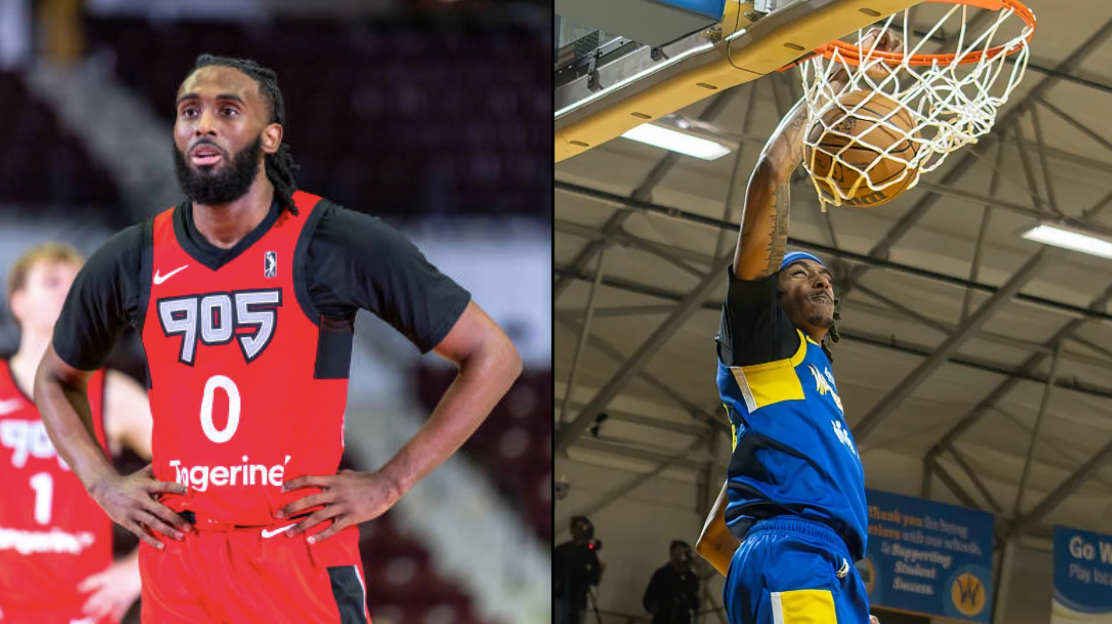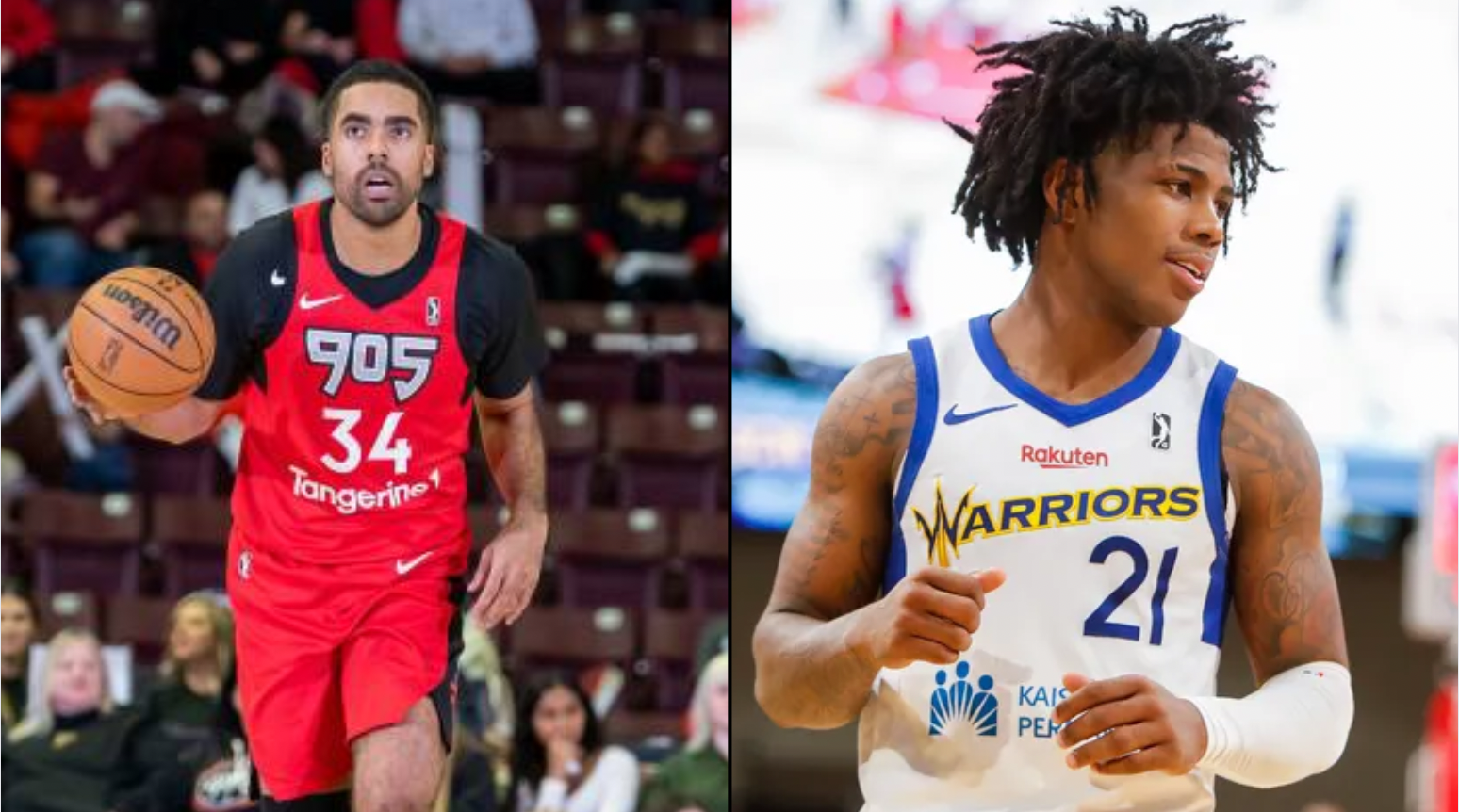Typically when someone is trying to work on themselves — whether it’s in life or in this case, basketball — self-awareness goes a long way.
Which is why it was a good thing when Immanuel Quickley said on Wednesday “(I am) still learning when to be ultra-aggressive and when to get my teammates involved, the balance of it … it’s a lot, but I’m having fun learning all of it, because this is what I wanted.”
Acknowledging that things haven’t been totally smooth is an important step for the 24-year-old.
Quickely’s lacked consistency and aggression in terms of initiating offence and the result has been up and down levels of creation both for himself and others, at times. That’s despite a by-the-numbers improvement across the board as Toronto’s lead guard, averaging 16.9 points (+1.9 than in New York), 5.6 assists (+3.1), and 4.2 rebounds (+1.6).
His hesitancy and ineffectiveness in switching between scoring and passing from possession to possession are not the traits of modern lead guards, the likes of which the Raptors are choosing to invest in.
The good news is, post-All-Star break he seems to be figuring out how to strike that balance between playing within an offence versus dictating it. He’s dropped 24 points in back-to-back games, but it’s been less about the scoring and more about the fact that he’s initiating sequences on his terms.
A lot of what Quickley has tried to do as an offensive initiator with Toronto prior to this stretch has been passively moving the ball in an attempt to create an advantage, rather than creating an advantage to then move the ball through.
Pass first, score later, point guards a la Jose Calderon of Raptors old, are a thing of the past. The top-three assists leaders in the NBA today are guards who are scoring threats before all else (Tyrese Haliburton, Trae Young, and Luka Doncic), and they use that ability to bend defences and create playmaking opportunities.
Quickley has instead tried really hard to fit in. Not realizing that when the Raptors traded for him, it was in the hopes that he would stand out, like other premier guards in the league.
With the ball in his hand, using that twitchy speed, change of pace, and deep threat, is when Quickley’s at his most dangerous as an offensive engine. If he wants to be a consistent lead guard, it’ll come by hunting for looks (shots or passes) rather than just moving around in the offence and working off others.
A perfect example to work off of is his teammate RJ “Ginobili” Barrett, who’s levelled up as a passer since joining the Raptors, largely because he’s leveraged his downhill pressure and used that gravity to create open looks for himself and others.
Identifying strengths and using them to exploit defences is how lead guards of today excel, and that cog appears to be turning in real-time for Quickley.
In the Feb. 23 game against the Brooklyn Nets, we saw him fluidly use one of his best skills, pick-and-roll (PnR) navigation, to hunt his looks.
The 6-foot-3 speedster was one of the most effective scorers as a PnR ball handler (97th percentile) with the Knicks, but he hadn’t leveraged that ability or been nearly as impactful in that position with the Raptors (34th percentile).
He averaged 1.18 points per possession (ninth in the NBA) in New York and was the only player in the top 10 to average over three PnR possessions a night, so his efficiency wasn’t diluted by a small sample size. That was more points per possession (on lower volume) as a PnR ball handler than Shai Gilgeous-Alexander, Jalen Brunson, and the aforementioned assists leaders.
In Toronto, despite playing nearly eight more minutes and taking three more shots, Quickly has seen his PnR frequency dip from 32 per cent to 28 per cent. Granted, he’s doing much more stuff on the court — modern lead guards don’t spam pick and rolls like they did five years ago.
Thankfully, now that he’s had time to build more chemistry with his two vet-savvy PnR partners Kelly Olynyk and Jakob Poeltl, Quickley is using the action with a lot more intention, and it’s paying dividends.
For instance, against Brooklyn, seven of his 16 shots came out of PnRs or screen sets and he converted those on a 71 per cent clip. He’s attacking through screens and is a lot less passive, and it’s creating a variety of scoring opportunities, both inside and outside the arc.
Against the Atlanta Hawks on Friday, I thought Quickley was going to learn a lesson from the PnR maestro Trae Young on how to effectively balance personal production and team offence. Atlanta’s All-Star has averaged 26.7 points and 10.9 assists, perfectly striking that balance Quickley is looking to hone in on — and he’s done it with tools that the Raptors point guard has at his disposal.
Mind you, Young is one of the best passers in the entire league. His ability to throw dimes to vertical threats specifically, is probably better than anyone, and something that very much puts him a sizeable step above Quickley — aside from the other passing traits. So, no, I’m not saying that the Raptors’ lead guard can turn into that level of a playmaker because expecting that would be asking for an insane leap.
I’ll also concede that it’s different in the sense that Young doesn’t play alongside a Barnes or Barrett who hold the ball quite a bit (although Dejounte Murray is similar), but the principles of his game given the similar tools (i.e., speed, change of pace, screen navigation), should to some degree be translatable to what the Raptors want out of Quickley.
Young is arguably the league’s best PnR creator (I suggest clicking the link and comparing Young and Quickley’s film, the similarities are hard to deny) as he’s generating an NBA-best 27 points out of PnR when combining scoring and passing and doing it with some of the highest volume/frequency in the NBA.
Another similarity is the fact that Young primarily works with space-eating centres in Clint Capela and Bruno Fernando, but he circumvents that by working them through as many PnRs as he can. Using solid screen-setting in conjunction with his deep threat and elite gear shifting to either dish the ball out to rim-runners or create his own looks, like his patented floater.
So you can see why I thought it was going to be a game for Quickley to learn up close.
What ended up happening was the Raptors’ defence (which has looked impressive lately) held Young to just 11 points and seven assists on 4-of-13 shooting while Quickley showed he didn’t need a demonstration. The Raptors guard instead highlighted how deadly his ability to change speeds can be, just like Young’s.
Whether it was accelerating past defenders for a layup like his first basket of the game, or decelerating into open threes, like his second basket of the game, he was comfortable using his mobility to create space and get looks to which he’s accustomed. He hunted his own offence.
Quickley using his speed more often is an important development, especially within the context of how much the guard has struggled inside the arc.
He’s shooting a career-low 39.6 per cent on 2-point attempts, after shooting over 47 per cent during his Knicks tenure, and nearly every 2-point location that’s tracked on Cleaning the Glass shows his numbers are the lowest of his career or the lowest since his rookie season.
Part of the reason is that he’s not initiating his own looks inside the line nearly as much as he was prior to playing in Toronto.
Quickley has been assisted on 53 per cent of his makes at the rim and 59 per cent of his total makes while in Toronto — both of which are career-high marks. In the context of head coach Darko Rajakovic’s offence that’s not surprising, but the problem is, fitting into the scheme hasn’t entirely played to his strengths.
His off-the-ball movement is great for transition looks, especially from deep, but when he’s cutting inside, he loses a lot of his ability to change speeds and create separation — which for a smaller guard is obviously important. So, the more he uses that live dribble, the better his efficiency from the inside will be.
It’s encouraging to see that when Quickley said that “the coaching staff was telling me to shoot a lot more,” he not only listened to that feedback but did it in a way that genuinely plays to what he’s best at.
With the scoring starting to sort itself out (as long as he stays aggressive), it’ll also help the assist numbers tick back in an upward direction. The more defences respect his threat level, the more opportunities he’ll have to respond and create for others.
Again, the best guards in the league don’t strike a balance by simply playing within an offence, they dictate the terms of the game and make defences react to them in order to create advantages.
To Quickley’s credit, he’s starting to make that happen.
Evidenced by his play in the second half against the Hawks. After dropping 18 points in the first half while shooting 67 per cent from deep, Atlanta came out in the second half doubling him and trying to trap the guard. He made the right read just about every time, finding his bigs while facing increased ball pressure and his confidence as an initiator was visibly present.
The final of his five dimes was the most indicative of that as he pump-faked above the break, which Dejounte Murray bit on (I don’t blame him given Quickley shot 6-for-8 from deep), and Quickley drove inside, and when he caught Deandre Hunter’s attention he shoveled the ball to Scottie Barnes for a quick dunk. He was leveraging his scoring first, attacking the weaknesses created in the defence as a result, and remaining aware of where the help came from, creating open cutters behind them.
This closing stretch of the season is all about development and talent evaluation, and for a Raptors squad aiming to retain Quickley through restricted free agency, seeing how he grows in this role will be vital to their future success.
So using him in positions that are advantageous to his game will ultimately help develop those skills. More reps to read defences, learn how to make skip passes through traffic, or even work on not killing his dribble too early.
Only time will tell what kind of starting point guard he can be, but the talent to be a dynamic playmaker who can bend defences on a nightly basis is there. He can navigate through screens to get himself countless looks from deep or use his blistering speed to attack inside — all while using both skill sets to also create for others.
With 25 games left this season to build up their starting point guard of the future, the Raptors have seemingly found the right combination of words and tactics to get Quickley to understand how a lead PG operates in today’s NBA, and for what it’s worth, his self-awareness probably helped speed that process up.



